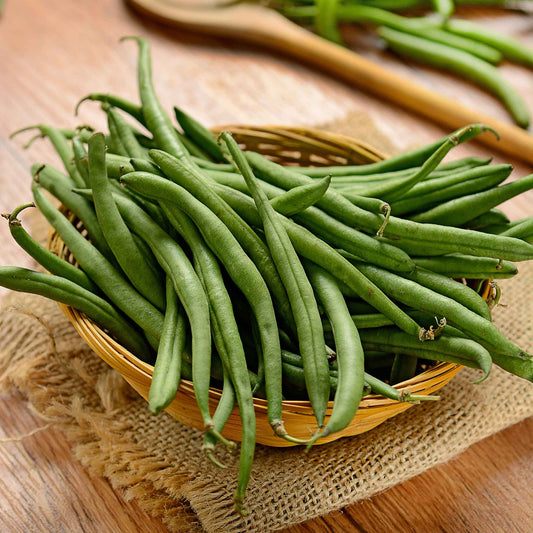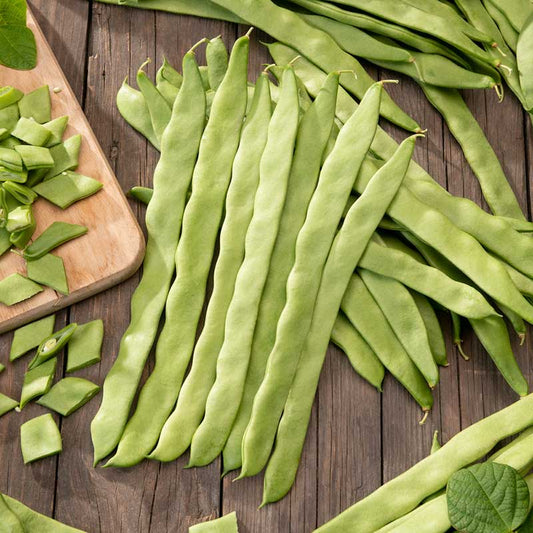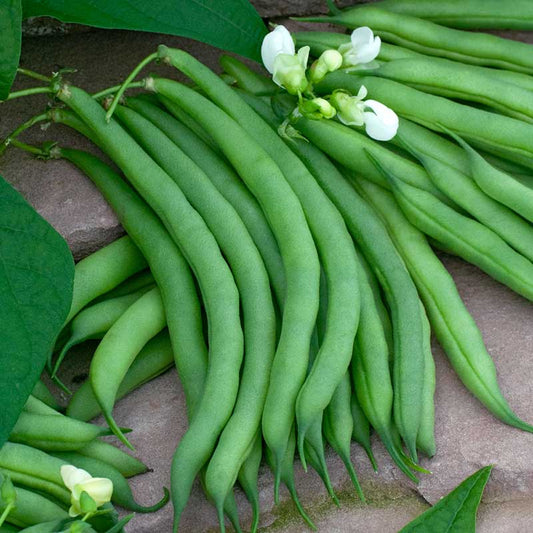-
main-collection-product-grid

Bean Seeds (Bush) - Burpee Stringless
Early producer of meaty five-inch long bean podsOut of StockBean Seeds (Bush) - Burpee Stringless
Early producer of meaty five-inch long bean podsRegular price As Low As $5.99Regular priceUnit price per -
main-collection-product-grid

Bean Seeds (Bush) - Light Red Kidney
This popular kidney bean is great in bean salads, chili, and soupsOut of StockBean Seeds (Bush) - Light Red Kidney
This popular kidney bean is great in bean salads, chili, and soupsRegular price As Low As $5.99Regular priceUnit price per -
main-collection-product-grid

Bean Seeds (Bush) - Commodore Improved
Six to eight-inch long pods mature on compact bushOut of StockBean Seeds (Bush) - Commodore Improved
Six to eight-inch long pods mature on compact bushRegular price As Low As $5.99Regular priceUnit price per -
main-collection-product-grid

Bean Seeds (Bush) - Romano
Flat, stringless bush bean popular in European kitchensOut of StockBean Seeds (Bush) - Romano
Flat, stringless bush bean popular in European kitchensRegular price As Low As $5.99Regular priceUnit price per -
main-collection-product-grid

Bean Seeds (Bush) - Kentucky Wonder 125
Great early maturing bean that produces over a long seasonOut of StockBean Seeds (Bush) - Kentucky Wonder 125
Great early maturing bean that produces over a long seasonRegular price As Low As $5.99Regular priceUnit price per
Growing heirloom beans in your garden
- 37 heirloom bean seed varieties
- Very simple to grow and do well on most gardens and soil types
- Best if sown outdoors after the last spring frost
- Prefers full sun exposure
Types of heirloom beans
Choose from pole, bush, or runner varieties for a must-have heirloom vegetable in the garden. Pole beans take up very little space in the yard and can be grown along a fence or other vertical structure. Beans come in a rainbow of colors, including green, yellow, purple, and red.
Heirloom beans are the seeds of a variety of flowering plants in the Fabaceae family that are used as both human and animal food. They may be prepared in a variety of ways, including boiling, frying, and baking, and are used in many traditional cuisines around the world. The word "bean" has been used in West Germanic languages since before the 12th century. After interaction between Europe and the Americas during the Columbian era, the word was expanded to include pod-borne seeds of Phaseolus, such as the common bean and the runner bean, as well as the related genus Vigna. Coffee beans have long been mistaken for other seeds with similar shapes, such as Old World soybeans, peas, various vetches, and lupins, as well as those with merely a passing resemblance, such as coffee beans, vanilla beans, castor beans, and cocoa beans. As a result, the term "bean" can refer to a variety of things.
The ideal growing conditions for heirloom beans
Heirloom beans are a summer crop, so they require warm weather to grow and thrive. From planting to harvest, the average maturation time is 55 to 60 days. Bean plants are vines that need to be supported from the outside. Native Americans used to grow them alongside squash and maize, with the cornstalks acting as a support system for the beans. You may have heard of the three sisters, which relates to the aforementioned harmonic trio.
There are a plethora of bean kinds to pick from. Choosing your variety is sometimes the most difficult aspect. However, once you've chosen your beans, appropriate planting is essential. If you're new to growing beans, do your homework on each type before planting to ensure you're providing the right environment and care.
For more information about planting, growing, and caring for beans, see out Bean Seeds Planting Guides: Pole Beans, Bush Beans, Fava Beans, Edamame Beans




